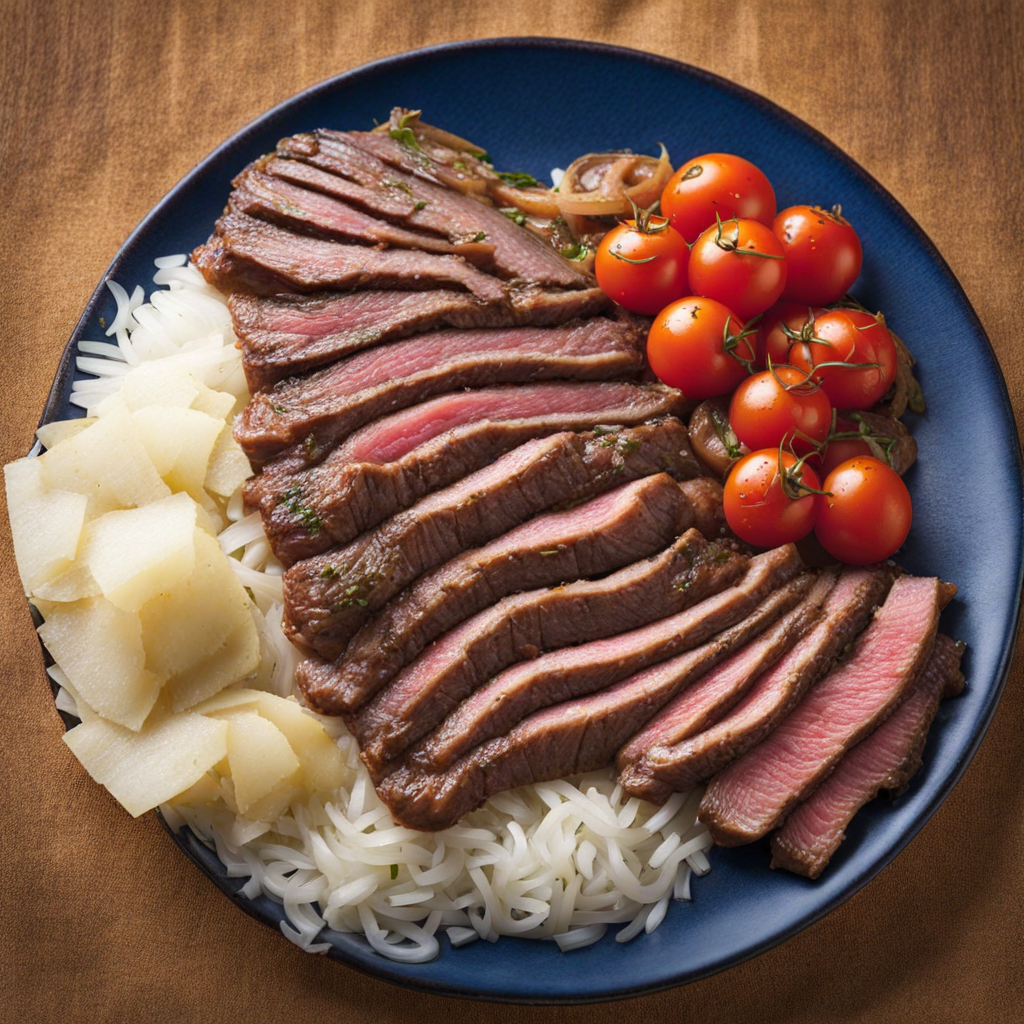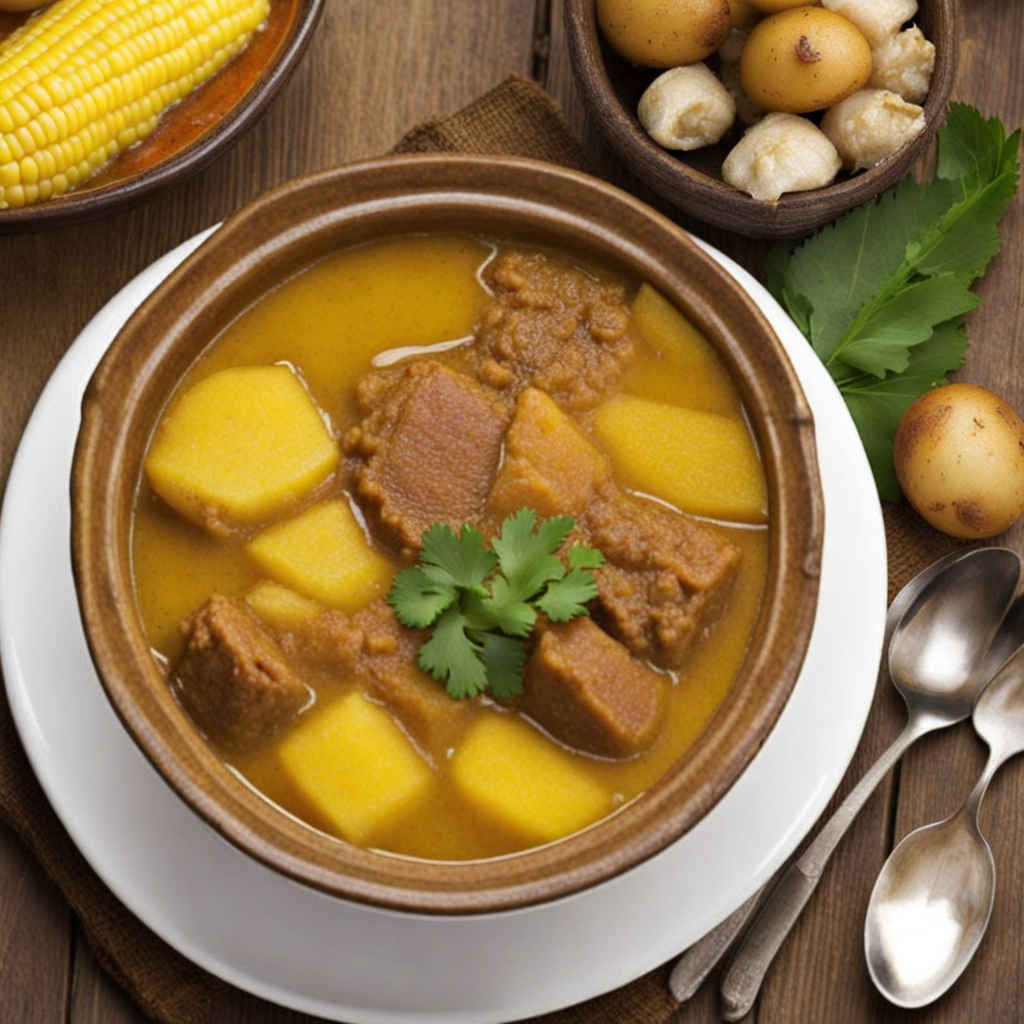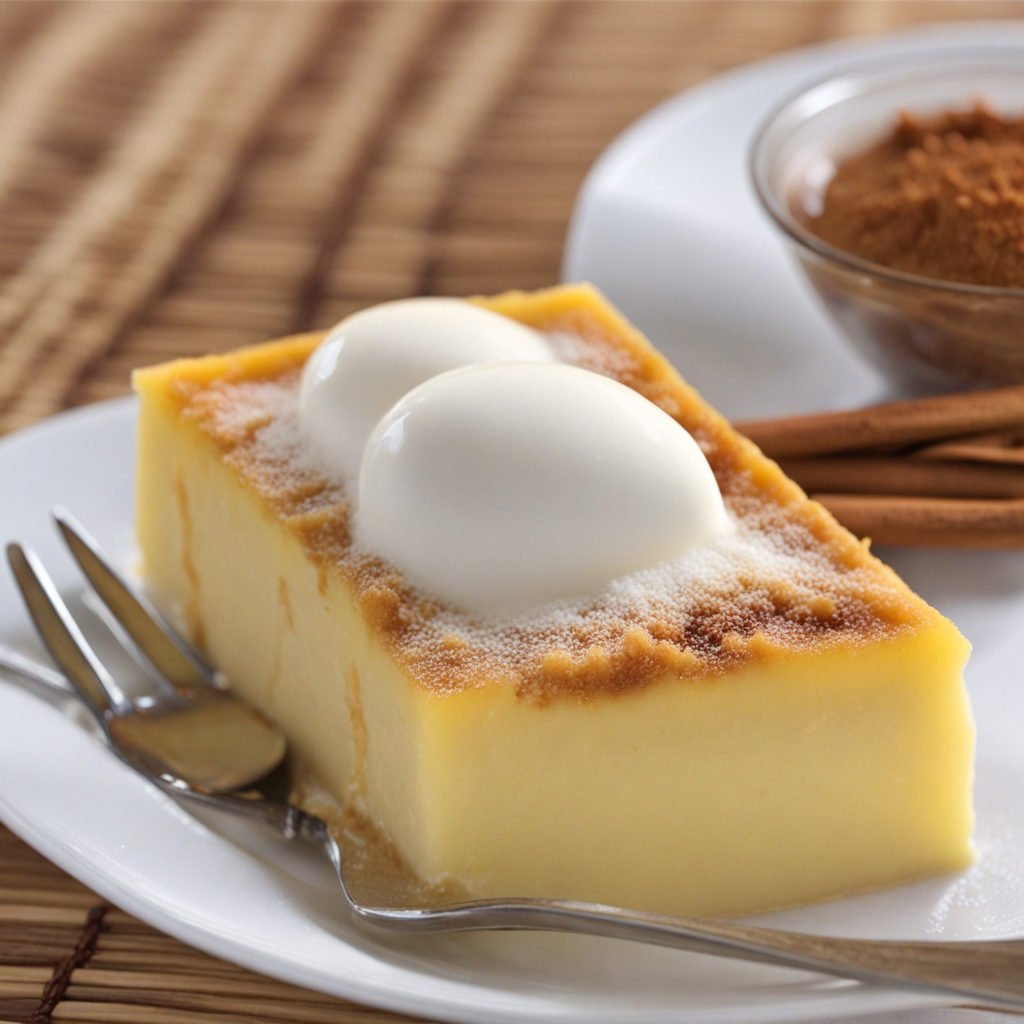Sobrebarriga
Sobrebarriga, a traditional Colombian dish, is a delight for those seeking to explore the rich flavors of Colombian cuisine. This dish primarily features flank steak, known for its tenderness and robust flavor, which is slow-cooked until it becomes incredibly soft and succulent. The meat is often marinated with a blend of spices, garlic, and onions, allowing it to absorb a medley of flavors that are characteristic of Colombian cooking. The slow cooking process not only enhances the tenderness of the steak but also allows the spices to meld, creating a satisfying depth of flavor that is both hearty and savory. Accompanying the Sobrebarriga are typical Colombian sides that complement and elevate the dish. Common pairings include arepas, which are cornmeal cakes that add a delightful texture, and a side of rice, which serves as a base to soak up the delicious juices of the meat. Additionally, patacones, or crispy fried plantains, may also be served, providing a crunchy contrast to the tender steak. Some variations of the dish include a rich tomato and onion sauce poured over the meat, enhancing its flavor profile with a sweet and tangy note that balances the savory elements of the dish. The experience of enjoying Sobrebarriga is not just about the taste; it’s also about the warmth and hospitality that comes with Colombian culture. Typically served in a communal setting, this dish invites sharing among friends and family, making it a centerpiece of gatherings and celebrations. With each bite, one can savor the love and tradition that has been passed down through generations, making Sobrebarriga not just a meal, but a journey into the heart of Colombian culinary heritage.
How It Became This Dish
Sobrebarriga: A Culinary Journey Through Colombian History Nestled within the rich tapestry of Colombian cuisine lies a dish that embodies both the heart and history of the nation: Sobrebarriga. This traditional preparation, which translates to "over the belly," refers to a cut of beef from the lower part of the abdomen, often known as flank steak. The dish is not only a staple in Colombian households but also a symbol of the country's diverse culinary heritage, reflecting its indigenous, Spanish, and African influences. Origins of Sobrebarriga The term "Sobrebarriga" has its roots in the Spanish language, with "sobre" meaning "over" and "barriga" meaning "belly." The name itself hints at the cut of meat used in the recipe, which is derived from the belly area of the cow. This cut is known for its rich flavor and tenderness when cooked properly, making it a favorite for many Colombian families. Historically, the practice of utilizing various cuts of beef has deep roots in Colombian culture, where cattle ranching flourished. The Spanish introduced cattle to the Americas in the 16th century, and they quickly adapted to the diverse climates of the Colombian highlands and plains. The indigenous populations, who had relied on local game and fish for sustenance, began to incorporate beef into their diets, leading to a fusion of culinary practices that would lay the groundwork for dishes like Sobrebarriga. As the dish evolved, it became a reflection of the socio-economic landscape of Colombia. In rural areas, where families often raised their own cattle, Sobrebarriga emerged as a practical and hearty meal. The beef was typically cooked slowly to enhance its flavor, often accompanied by locally sourced ingredients such as potatoes, corn, and various vegetables. This practice of utilizing every part of the animal not only minimized waste but also highlighted a deep respect for the land and its resources. Cultural Significance Sobrebarriga holds a special place in the hearts of Colombians, transcending mere sustenance to become a dish of tradition and family bonding. It is often prepared during significant celebrations and gatherings, serving as a centerpiece in festive meals. For many, the act of cooking and sharing Sobrebarriga is a ritual that reinforces family ties and cultural identity. The dish is especially popular in the Andean regions of Colombia, including Bogotá, where it is frequently served with a side of ajiaco (a traditional potato soup), rice, and avocado. In the Caribbean and coastal regions, variations of the dish can be found, often incorporating local spices and ingredients that reflect the flavors of the sea. This regional adaptability illustrates how Sobrebarriga has become a canvas for culinary creativity, allowing families to infuse their personal touch while honoring their heritage. Development Over Time As Colombia has evolved, so too has the preparation and presentation of Sobrebarriga. In the 20th century, the dish began to gain recognition beyond local kitchens, finding its way into restaurants and culinary festivals. Chefs and food enthusiasts started to celebrate Colombian cuisine on a global stage, showcasing traditional dishes like Sobrebarriga as emblematic of the country's rich culinary history. The modern interpretation of Sobrebarriga often embraces a fusion of techniques and flavors, reflecting the influences of international cuisine. Some chefs experiment with marinades that incorporate elements from Asian or Mediterranean cooking, while others focus on artistic plating that elevates the dish from home-cooked comfort to gourmet experience. Despite these innovations, the essence of Sobrebarriga remains rooted in its traditional preparation, honoring the flavors and techniques passed down through generations. In recent years, there has also been a growing movement toward sustainable and ethical sourcing of ingredients. Many Colombian chefs are now prioritizing locally sourced, organic produce and humanely raised beef, ensuring that the preparation of Sobrebarriga aligns with contemporary values of health and environmental consciousness. This shift not only enhances the flavor of the dish but also strengthens the connection between the land and its people. The Role of Sobrebarriga in Colombian Identity Sobrebarriga is more than just a meal; it is a symbol of Colombian identity. In a country marked by its diversity, the dish serves as a unifying element that brings together various cultural influences. It speaks to the heart of Colombian hospitality—where food is a medium for connection, storytelling, and celebration. As Colombia faces new challenges in the modern era, including globalization and urbanization, the importance of preserving culinary traditions like Sobrebarriga becomes even more pronounced. It represents a link to the past, a reminder of the resilience of Colombian families and communities who, through their food, convey their heritage and values. Conclusion In conclusion, Sobrebarriga is a dish steeped in history, culture, and tradition. Its origins reflect the blending of indigenous, Spanish, and African influences, while its evolution speaks to the adaptability and creativity of Colombian cuisine. As families across the country continue to prepare and share this beloved dish, they not only nourish their bodies but also honor the legacy of their ancestors and the vibrant culture that shapes their identity. Whether enjoyed at a bustling family gathering or a quiet dinner at home, Sobrebarriga remains a cherished symbol of Colombian heritage, inviting all who partake in its flavors to experience a taste of the past while looking forward to the future. In every bite, there lies a story of resilience, community, and the enduring power of food to bring people together.
You may like
Discover local flavors from Colombia







